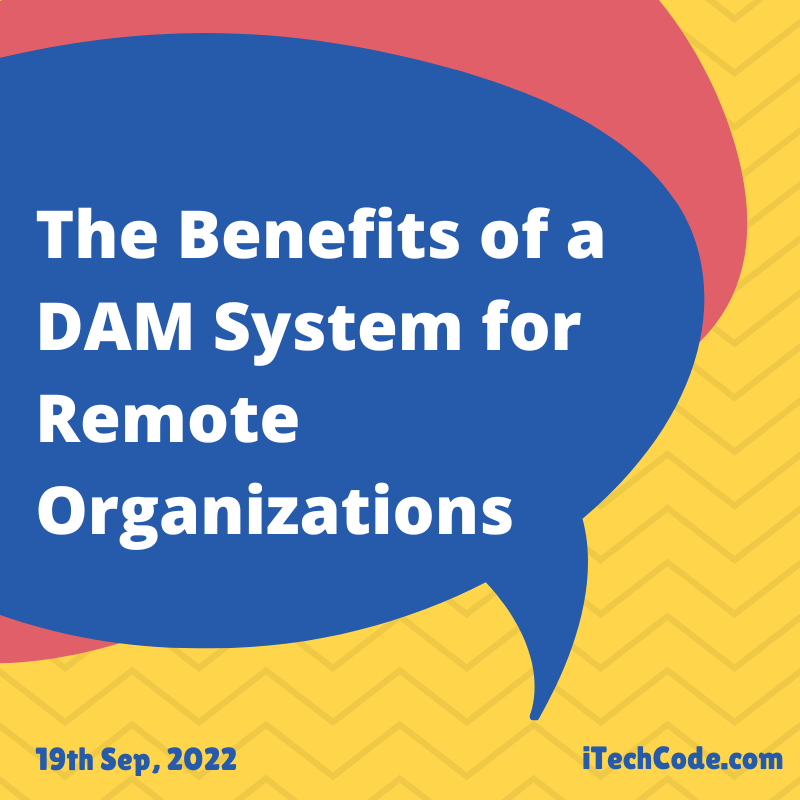The COVID-19 pandemic has dramatically shifted the ways organizations work and employees work together over the past couple of years. Today, it’s estimated that 16% of companies globally are fully remote, with nearly 5 million people working remotely at least half the time in the U.S. However, a recent report from Upwork found that only 43% of companies actually have remote work policies in place.
Remote work provides employees the flexibility to work from home, and one of the most critical solutions to ensuring success across teams – especially the marketing and creative teams – is a digital asset management system (DAM). Read on to earn the benefits of a DAM for remote organizations and employees.
What is a DAM?
A digital asset management system allows organizations and teams to easily organize, edit, and share digital assets all in the same place, including video, images, audio, documents, presentations, and more. These systems allow for collaboration across departments through a shared content hub, ensuring marketing and creative teams have access to approved assets for current campaigns and keeping brand guidelines easily accessible to maintain brand consistency and promote proper use of brand essentials.
Primary benefits of a DAM include:
- Easy file management
- File access and sharing
- Workflow automation
- Asset organization, publishing, and distribution
- Secure, controlled access
- Tracking and reporting capabilities
How A DAM Can Support Remote Employees
Having a DAM to organize and access your digital assets provides several benefits, especially for remote employees. Five examples include:
1. Constant, Remote Access
Regardless of where employees are in the world, they can access the brand files and assets they need. This eliminates the need to email large files or use in-house servers or hard drives. It also doesn’t require a VPN, offering constant, remote access while also keeping assets secure.
A cloud-based DAM can ensure everyone can access, upload, download, and share the assets they need, but leaders can also customize the settings to limit who can do what. Employees can have access at any time, regardless of time zone, which is critical for remote organizations.
The key is to ensure the DAM system you choose meets the security standards required by your organization.
2. Easy Transfer of Projects
A DAM is essentially a centralized library for all file assets and types, offering the ability for employees to pass off projects from one team or employee to another directly through the DAM. Again, this eliminates the need to send large files through email, ensure permissions for shared links, download and upload files, or other cumbersome file-sharing activities.
It also can help teams avoid delays in sharing. For example, team members don’t have to wait on their colleagues to start their workday in order to access or work on files. Some DAM systems also have advanced sharing features for both internal and external users while ensuring only those with permissions to view and edit files can do so.
3. Improved Communications
Seamless communication is critical, especially for remote employees. Using a DAM can help keep everyone up to speed on current initiatives and ensure the meeting of timelines and deadlines. DAM systems offer numerous integrations your team already uses, such as Workfront, making it easy to attach assets, maintain version control, provide edits, approve content, and more. Accessibility across employees and teams also encourages collaboration and communication in a seamless way.
4. Processes Are More Efficient
Using a DAM helps reduce bottlenecks – employees with access can get any needed files themselves without waiting for them to be sent. They can also directly share files externally, such as with media agencies, without needing to send files via email or a digital file locker. (This happens through private download links or public-facing galleries.) They can also create review and editing processes in the system, ensuring efficiency and meeting deadlines.
5. Consistency
Maintain a consistent brand and messaging easier with a DAM. With constant remote access, employees will be aware of required versions of images or logos or stay on top of changes, more easier. All digital assets can be made available to teams immediately to ensure the right files are used at the right time.
Harness The Full Power of A DAM
At MerlinOne, we help remote organizations become more productive, organized, and efficient through our digital asset management system products. Learn how to keep track of your assets, reduce lost time, and gain control of your creative and production processes. Contact us today to learn more.

You can also stay updated by subscribing to iTechCode.